17th Century Charles II Olive Oyster Floral Marquetry Table, Circa 1680-1690
Sold
Request Information
Follow Us
17th Century Charles II Olive Oyster Floral Marquetry Table, Circa 1680-1690
Floral marquetry inlaid olive oyster and ebony side table, attributed to Gerrit Jensen (fl.1667-1715), London, circa 1680. Incorporating Olive Oyster, ebony, stained bone, holly, figured olive walnut and tulip. The rectangular top is inlaid with a central panel of floral decoration incorporating birds within a cross-banded slip and a further floral inlaid border.
A single frieze drawer inlaid with conforming decoration raised on barley or as also known, Solomonic twist legs over an inlaid X stretcher raised on bun feet.
The attribution to Jensen derives from a group of floral marquetry furniture attributed to the cabinet maker, however, there is one table in particular held at Ham House that relates to this table more than any other. See images.
Jensen was almost certainly of Dutch origin and was known to be working in London from 1677 and at premises in St. Martin’s Lane by 1680 where he was described as a pre-eminent ‘Cabinet maker and Glasse seller’. Jensen was able to buy his way into the Joiners Company in 1667, probably at significant expense, thus proving his belief in his work and his establishment in London. From the early 1680s, he was the accredited cabinet maker to the Royal Household where several of his pieces remain, including a cushion frame mirror (RCIN 1383). A very similar mirror, almost certainly by Jensen, hangs at Ham House, Richmond, here three side tables, a strong box on stand and a cabinet are attributed on the basis In 1670s London, floral marquetry was a novelty, Reinier Baarsen suggests that it was this speciality work with which Jensen conquered the London clientele a few years later. Assuming his Dutch roots are accurate Jensen would have brought the art of floral marquetry with him from Holland to London, possibly via Paris after studying the work of the Frenchman Cornelius Gole, following Pierre Gole (c.1620-1685) in Paris and Leonardo van der Vinne (active c.1659-1713) in Florence.
In style, Jensen’s furniture is consistently French in form, and particularly close to the work of Pierre Golle, Boulle’s famous predecessor. Golle’s will mentions a sum of money owed to Jensen for glue suggesting that close contact existed between the two masters. The catalyst here may well have been Golle’s brother-in-law, Daniel Marot, the Huguenot designer and engraver trained under Bérain, who left France before the Revocation of the Edict of Nantes, entering the service of William and Mary first in Holland and then in England. Marot’s engraved furniture designs show remarkable similarities with Jensen’s documented pieces in the Royal Collection, and others attributed to him at Boughton, Drayton and elsewhere. It is possible that Jensen had French craftsmen working for him: for instance, one Peter Berew, who signs a receipt on his behalf at Drayton in 1693. French terms, barely anglicized, occur constantly in the accounts, and indeed the ‘beuro’ or ‘scrutore’ (escritoire) with ‘drawers to stand on the top’ (otherwise known as the ‘caddinet’) may be a form which Jensen introduced to this country from France, together with the narrow gateleg table with a folding top.
Gerrit Jensen was one of the foremost cabinet-makers of his day and worked in London from his premises in St. Martin’s Lane. Jensen served the English crown since the reign of Charles II as the accounts of the Royal Household record a payment to him in 1680, for furniture which King Charles II commissioned as a royal gift for the King of Morocco. In 1689, Jensen was appointed royal cabinetmaker to King William III and Queen Mary – ‘Cabinet maker in Ordinary’ to the Crown; and he retained his royal appointment throughout the reign of Queen Anne, supplying furniture for St. James’s Palace, Hampton Court and Kensington Palace. In addition to the Royal family and the Dukes of Devonshire, Jensen also attracted commissions from senior members of the nobility, including the Dukes of Richmond, Hamilton, Montagu and Somerset, collaborating with other leading artists and craftsmen on the decoration of some of the greatest town and country houses in England. Jensen was one of several artist-craftsmen of foreign background employed at the English court, and his work shows a strong Continental influence, reflecting the fashionable French court styles of Pierre Golle, André Charles Boulle and Daniel Marot earning him the title ‘the English Boulle’.
Condition
Good. Wear consistent with age and use.
Dimensions
Height: 71.5 cm (28.15 in)
Width: 94 cm (37.01 in)
Depth: 63.5 cm (25.01 in)
PREVIOUSLY SOLD
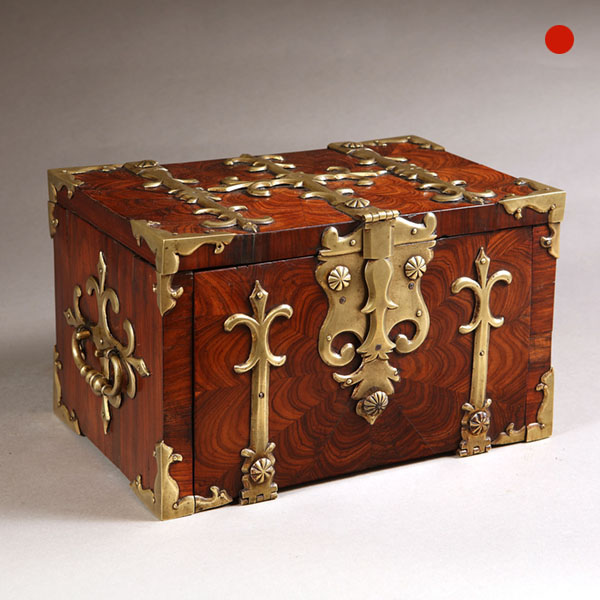
17th Century William and Mary Kingwood Strongbox
A 17th century William and Mary Kingwood strongbox, with gilt brass straps. This strongbox has to be one of the most charming and certainly the smallest example we have encountered, at just 17.5 cm high, 28 cm wide and 18 cm deep. A strongbox of similar merit form and style resides at Burghley House in ‘The 1st George State Room.

18th Century George III Mahogany Serpentine Chest or Commode
A fine George III mahogany serpentine commode, England, circa 1770. Attributed to Henry Hill, Marlborough. The three graduated drawers retain their original gilt brass handles over a unique carved apron and flanked by moulded angles continuing into the shaped cabriole feet.

George I Burr and Highly Figured Walnut Lowboy, Circa 1720
George I Burr and Highly Figured Walnut Lowboy Circa 1720. England SOLD Follow UsGeorge I Burr and Highly Figured Walnut Lowboy, Circa 1720. England The feather and cross banded top is quarter veneered with burr walnut and edged with a...

18th-Century George III fitted miniature burr yew and satinwood chest attributed to Ince and Mayhew
A perfectly proportioned miniature chest attributed to Ince and Mayhew. The miniature is of a style that thrived in the latter part of the 18th century, proving popular with nobility and the middle classes. I am not aware of another miniature chest thought to be by eminent makers.

George III Mahogany Serpentine Chest of Drawers
Georgian perfection, 18th century George III mahogany serpentine chest of drawers with brushing slide, fabulous reeded columns and retaining superb original age patinated surface. Choice cuts of flame mahogany veneer sit below the brushing-slide to the four oak lined cock-beaded graduating drawers, which are fitted with their original gilt swan-neck handles, skeleton escutcheons and locks.
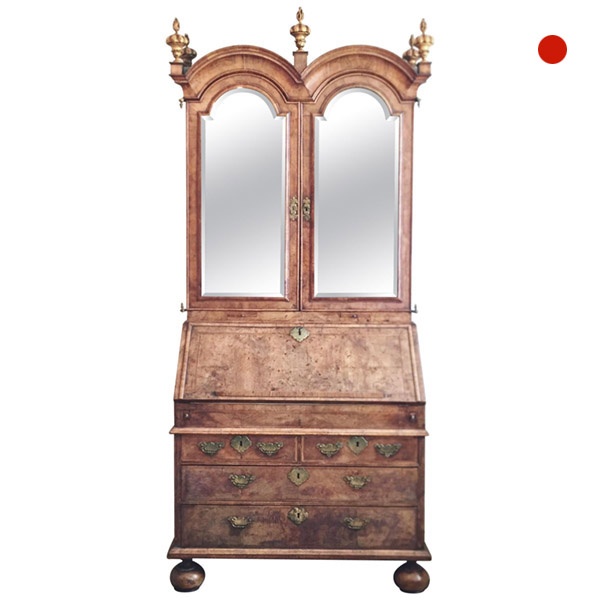
Queen Anne Fully Fitted Figured-Walnut Double Dome Bureau Bookcase
Queen Anne Fully Fitted Figured-Walnut Double Dome Bureau Bookcase 1702 to 1714 England SOLD Follow UsQueen Anne Fully Fitted Figured-Walnut Double Dome Bureau Bookcase A Queen Anne Fully Fitted Figured-Walnut Double Dome Bureau Bookcase,...

17th Century William and Mary Kingwood Strongbox
A 17th century William and Mary Kingwood strongbox, with gilt brass straps. This strongbox has to be one of the most charming and certainly the smallest example we have encountered, at just 17.5 cm high, 28 cm wide and 18 cm deep. A strongbox of similar merit form and style resides at Burghley House in ‘The 1st George State Room.

18th Century George III Mahogany Serpentine Chest or Commode
A fine George III mahogany serpentine commode, England, circa 1770. Attributed to Henry Hill, Marlborough. The three graduated drawers retain their original gilt brass handles over a unique carved apron and flanked by moulded angles continuing into the shaped cabriole feet.

George I Burr and Highly Figured Walnut Lowboy, Circa 1720
George I Burr and Highly Figured Walnut Lowboy Circa 1720. England SOLD Follow UsGeorge I Burr and Highly Figured Walnut Lowboy, Circa 1720. England The feather and cross banded top is quarter veneered with burr walnut and edged with a...

18th-Century George III fitted miniature burr yew and satinwood chest attributed to Ince and Mayhew
A perfectly proportioned miniature chest attributed to Ince and Mayhew. The miniature is of a style that thrived in the latter part of the 18th century, proving popular with nobility and the middle classes. I am not aware of another miniature chest thought to be by eminent makers.

George III Mahogany Serpentine Chest of Drawers
Georgian perfection, 18th century George III mahogany serpentine chest of drawers with brushing slide, fabulous reeded columns and retaining superb original age patinated surface. Choice cuts of flame mahogany veneer sit below the brushing-slide to the four oak lined cock-beaded graduating drawers, which are fitted with their original gilt swan-neck handles, skeleton escutcheons and locks.

Queen Anne Fully Fitted Figured-Walnut Double Dome Bureau Bookcase
Queen Anne Fully Fitted Figured-Walnut Double Dome Bureau Bookcase 1702 to 1714 England SOLD Follow UsQueen Anne Fully Fitted Figured-Walnut Double Dome Bureau Bookcase A Queen Anne Fully Fitted Figured-Walnut Double Dome Bureau Bookcase,...
YOU MAY ALSO LIKE

Miniature William and Mary 17th Century Diminutive Olive Oyster Chest C.1690
Miniature William and Mary 17th Century Diminutive Olive Oyster Chest, C.1690 £15,900Follow UsMiniature William and Mary 17th Century Diminutive Olive Oyster Chest, C.1690 A Fine Miniature William and Mary 17th Century Diminutive Olive Oyster...
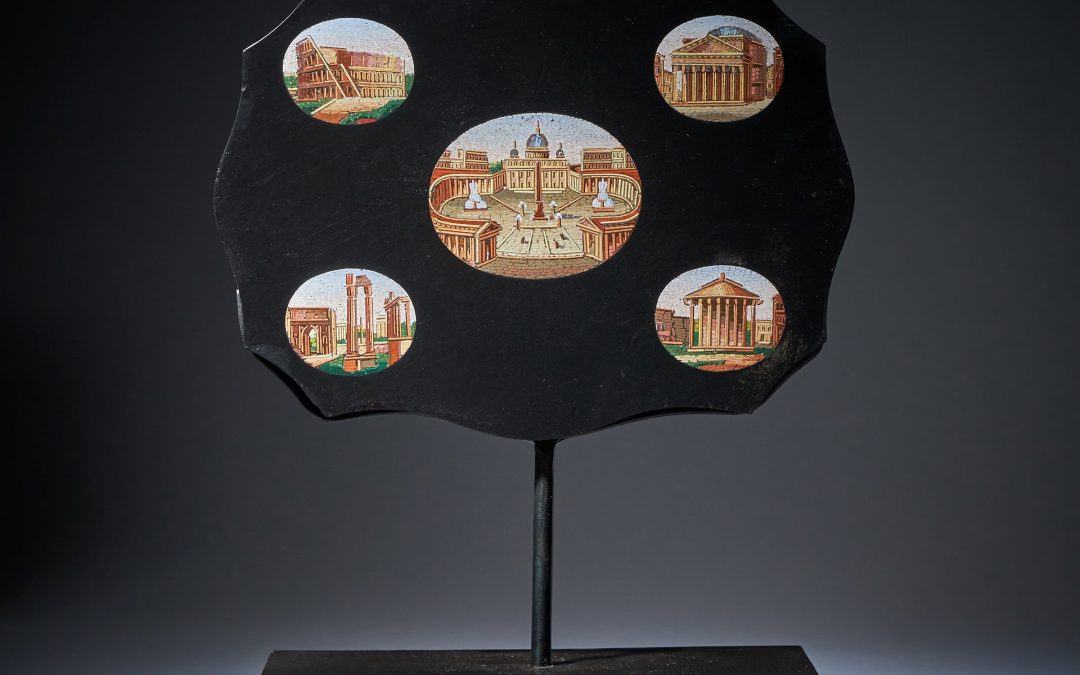
19th Century Grand Tour Micro Mosaic Tablet Depicting Italian Architecture
19th Century Grand Tour Micro Mosaic Tablet Depicting Italian Architecture £3,650Follow Us19th Century Grand Tour Micro Mosaic Tablet Depicting Italian Architecture A fine mid-19th century serpentine grand tour micro mosaic tablet or...
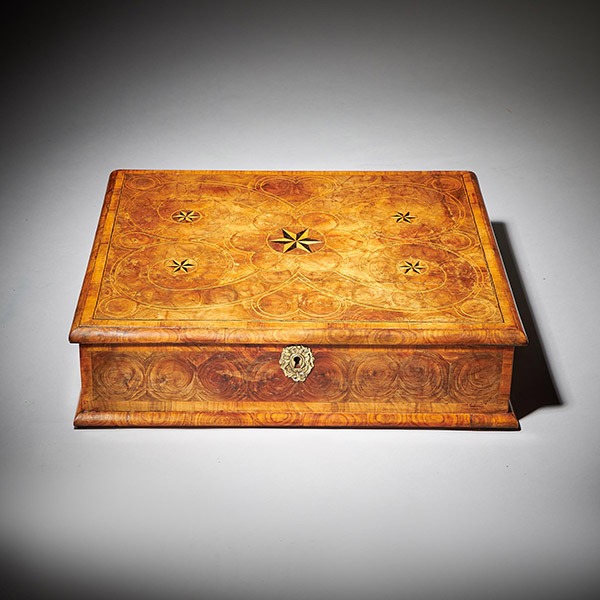
Large William and Mary 17th Century Inlaid Olive Oyster Lace Box, Circa 1690
Large William and Mary 17th Century Inlaid Olive Oyster Lace Box £5,500[wpforms_selector form_id="11387" show_title="on" _builder_version="4.22.1" _module_preset="default" custom_margin="-30px||||false|false" global_colors_info="{}"...
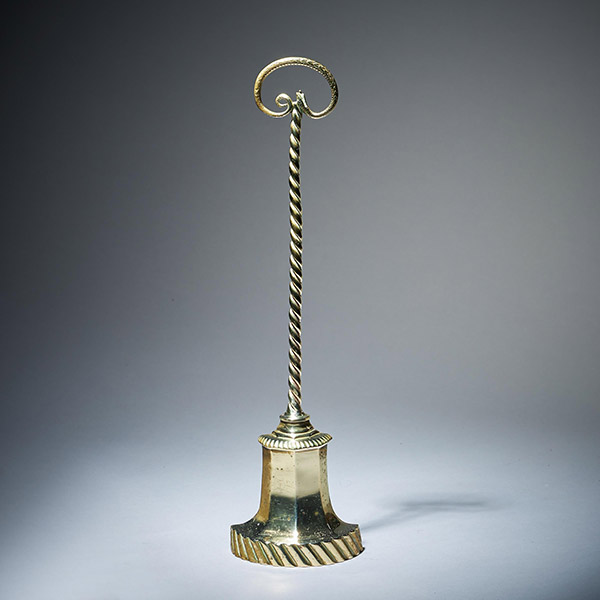
Early 19th Century High Regency Brass Snake Doorstop
Early 19th Century High Regency Brass Snake Doorstop £1,100Follow UsEarly 19th Century High Regency Brass Snake Doorstop A high Regency solid brass bell-shaped doorstop with snake handle, from the reign of George IV, Circa 1770. England The...
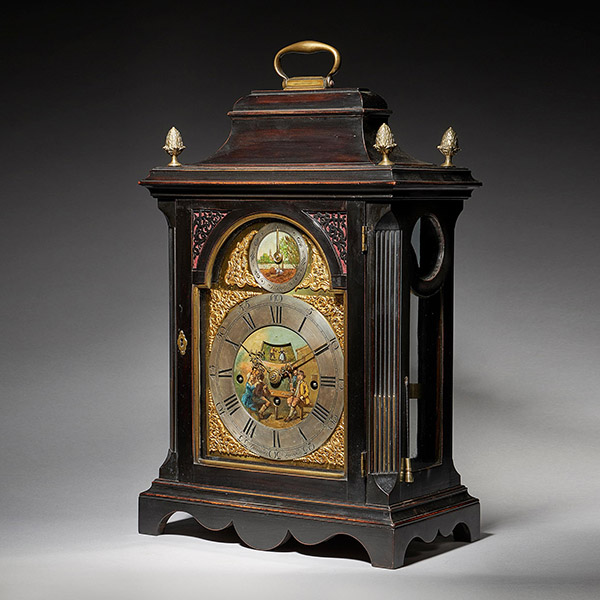
Extremely Rare George III 18th Century Quarter-Striking Bracket Clock, Signed
Extremely Rare George III 18th Century Quarter-Striking Bracket Clock, Signed Follow UsExtremely Rare George III 18th Century Quarter-Striking Bracket Clock, Signed An extremely rare George III 18th century ebonized quarter-striking bracket...

18th Century George III Carved Mahogany Serpentine Concertina Action Card Table
18th Century George III Carved Mahogany Serpentine Concertina Action Card Table £19,800Follow Us18th Century George III Carved Mahogany Serpentine Concertina Action Card Table A bold and impressive George III carved mahogany serpentine...

Miniature William and Mary 17th Century Diminutive Olive Oyster Chest C.1690
Miniature William and Mary 17th Century Diminutive Olive Oyster Chest, C.1690 £15,900Follow UsMiniature William and Mary 17th Century Diminutive Olive Oyster Chest, C.1690 A Fine Miniature William and Mary 17th Century Diminutive Olive Oyster...

19th Century Grand Tour Micro Mosaic Tablet Depicting Italian Architecture
19th Century Grand Tour Micro Mosaic Tablet Depicting Italian Architecture £3,650Follow Us19th Century Grand Tour Micro Mosaic Tablet Depicting Italian Architecture A fine mid-19th century serpentine grand tour micro mosaic tablet or...

Large William and Mary 17th Century Inlaid Olive Oyster Lace Box, Circa 1690
Large William and Mary 17th Century Inlaid Olive Oyster Lace Box £5,500[wpforms_selector form_id="11387" show_title="on" _builder_version="4.22.1" _module_preset="default" custom_margin="-30px||||false|false" global_colors_info="{}"...

Early 19th Century High Regency Brass Snake Doorstop
Early 19th Century High Regency Brass Snake Doorstop £1,100Follow UsEarly 19th Century High Regency Brass Snake Doorstop A high Regency solid brass bell-shaped doorstop with snake handle, from the reign of George IV, Circa 1770. England The...

Extremely Rare George III 18th Century Quarter-Striking Bracket Clock, Signed
Extremely Rare George III 18th Century Quarter-Striking Bracket Clock, Signed Follow UsExtremely Rare George III 18th Century Quarter-Striking Bracket Clock, Signed An extremely rare George III 18th century ebonized quarter-striking bracket...

18th Century George III Carved Mahogany Serpentine Concertina Action Card Table
18th Century George III Carved Mahogany Serpentine Concertina Action Card Table £19,800Follow Us18th Century George III Carved Mahogany Serpentine Concertina Action Card Table A bold and impressive George III carved mahogany serpentine...












